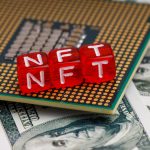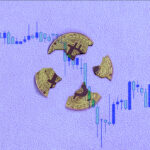Have you ever thought about putting your money into silver? This shiny metal isn’t just for jewelry; it’s also a popular choice for saving money and investing. People all over the world buy silver, hoping it will be worth more in the future.
But is it a wise choice for everyone? In this article, we’ll take a closer look at silver as an investment. We’ll explore the good things about it, the risks you should be aware of, and how to start if you’re interested.

Benefits of Investing in Silver
Investing in silver coins is a practical and appealing choice for many. These coins are not just easy to buy, sell, and store, but their variety in sizes and designs also attracts collectors. Holding physical investments like silver coins provides a tangible sense of security, a contrast to intangible assets like stocks or bonds.
For beginners, silver is an excellent starting point in investing. Its affordability compared to gold allows for small initial investments, easing newcomers into market dynamics without significant risk. As knowledge and confidence grow, investments can be gradually increased.
Diversifying investments is key, and silver contributes significantly to this strategy. Adding silver to a portfolio helps mitigate overall risk, given its unique market behavior compared to other assets.
Moreover, silver’s role as a hedge against inflation, its affordability, and the diversification it brings to investment portfolios enhance its attractiveness. Its tangible nature offers a sense of security, while its industrial demand, particularly in electronics and renewable energy, supports its value. The liquidity of silver present profitable opportunities, making it a potential versatile choice for various investors.
Risks of Investing in Silver
Price Changes
Price of Silver Per Ounce
Price Changes The market price of silver is notoriously unpredictable, exhibiting rapid and sometimes severe fluctuations. These price changes are influenced by a variety of market conditions such as global economic trends, industrial demand, and geopolitical events.
Investors must understand that while there’s potential for significant gains, the risk of losing capital is equally high. Staying informed about global market trends and economic indicators can help, but it does not eliminate the inherent risks of such volatility.
Storing Silver
Investing in physical silver, whether in the form of coins, bars, or other collectibles, comes with the added responsibility of ensuring safe storage. This typically means either investing in a high-quality safe for home storage or opting for a safety deposit box at a bank, both of which incur additional costs.
Beyond the physical security, there’s also the need for insurance to protect against potential loss due to theft, damage, or other unforeseen circumstances. The cost and logistics of secure storage and insurance are important factors to consider in the overall investment strategy for silver.
Purity Concerns
The authenticity and quality of silver are critical, especially when dealing with physical silver investments. The market is flooded with varying qualities of silver, and not all products meet the high standards one might expect.
This variability underscores the importance of purchasing from reputable and verified sellers. Buyers should be cautious of counterfeit or substandard products, as these can significantly undermine the value of the investment. Ensuring the purity and authenticity often means relying on certified and well-established dealers, which may come with a premium but offers assurance in terms of quality.
Silver Micro Investing
Silver micro investing is a simple and affordable way for anyone to start investing in silver. You don’t need a lot of money – even a few dollars can get you started. This method is great for beginners who want to learn about investing without risking too much.
Here’s how it works: Online platforms let you buy small parts of silver, like a share. You can do this from your phone or computer, making it easy and convenient. The best part? You can add more money whenever you’re ready.
Micro investing is less risky. Since you’re putting in small amounts, you won’t lose much if the market changes. It’s a good way to start learning about how investing in precious metals works.
To make it clearer, here’s a table comparing traditional silver investing with micro investing:
| Aspect | Traditional Investing | Micro Investing |
|---|---|---|
| Initial Cost | High (full bars/coins) | Low (small shares) |
| Risk | Higher | Lower |
| Flexibility | Less (physical silver) | More (digital) |
| Accessibility | Requires more effort | Easy (online) |
| Learning Curve | Steeper | Gentler |
Micro investing is perfect for beginners and those who don’t want to put a lot of money in all at once. It’s a smart, easy, and modern way to start investing in silver.
The Market for Silver
Silver is not just for making things look pretty. It’s also used in many industries like electronics and medicine. This means that there is always some need for silver, which can affect its price. The market for silver changes based on how much these industries need it and how much is available.
- Global market spanning investors, industrial users, central banks, speculators, and retail consumers
- Precious metal and industrial commodity driving robust markets in manufacturing hubs and financial centers
- Price fluctuates daily based on market demand, economic conditions, production volumes, geopolitics
- Key exchanges like COMEX provide price discovery and hedging/speculating vehicles
- Banks/dealers worldwide buy and sell physical silver products at small premiums to live spot price
- Highly liquid market across range of silver products allows participation for all interested parties
- Market data readily available online through financial sites
- Volatile at times but highly accessible and attractive commodity to follow and acquire
Different Ways to Invest in Silver
You can invest in silver in several ways. Besides coins, there are silver bars, which are bigger and cost more. You can also invest in silver through the stock market by buying shares in companies that mine or use silver. Each method has its own benefits and risks.
- Silver Coins: These are collectible and can be bought from coin dealers or online. They’re easy to store and sell.
- Silver Bars: Larger than coins, bars can be a more cost-effective way to invest in silver. They are best for those who can securely store them.
- Silver ETFs (Exchange-Traded Funds): These are stocks that track the price of silver. You can buy them just like any other stock, without the need to store physical silver.
- Silver Stocks: These are stocks of companies involved in silver mining. It’s an indirect way to invest in silver’s value.
- Silver Futures and Options: For more experienced investors, these are contracts to buy or sell silver at a future date. They can be complex and carry higher risk.
- Silver Jewelry: Buying silver jewelry can be a form of investment, but be aware of the craftsmanship value which may not translate into investment value.
- Silver Micro Investing: An option for beginners or those with limited funds, allowing investment in small amounts through digital platforms, which we talked about above.
Each of these methods has its pros and cons, and the best choice depends on your investment goals, resources, and level of expertise in handling silver as an investment.
Where Is Silver Accepted?
Silver has been valued as a precious metal and used as money for centuries. Unlike gold, it is more affordable for small investments and transactions. Silver coins and bullion are accepted for exchange and trade in many places worldwide.
Silver can be used for buying, selling, and bartering goods and services from any parties willing to accept it based on the value they attribute to it. Some companies focused on precious metals dealing in investment grade silver will purchase or sell silver.
Pawn shops, coin dealers, and precious metal exchanges will readily take silver as well. While not as widely accepted today for direct transactions as in the past, silver still holds value for investors and those interested in owning hard assets. Its attractiveness, portability, and divisibility into smaller increments allow silver to retain its functionality as money.
Is Silver Worth Investing In?
Whether silver is a good investment depends on your financial goals and risk tolerance.
If you have long-term savings goals over five to ten years and want to potentially realize appreciation, silver can be a compelling choice to diversify your portfolio.
Silver also historically protects against inflationary declines in cash and bonds’ real purchasing power.
However, silver carries risks like any investment. Its pricing is volatile, fluctuating based on market supply/demand dynamics.
Before investing, carefully consider your individual objectives and acceptable levels of price volatility. Factor in costs like commissions and storage as well.
With prudent analysis, silver can play a valuable role for building towards long-term savings milestones or offsetting inflation risks over a strategic multiyear timeframe for certain investors.
Investing In Alternative Precious Metals
Thinking about investing in platinum or gold notes? Our next articles are here to help. First, we’ll look at whether investing in platinum is a smart move. It’s a rare metal, but does that make it a good choice for your money? Then, we’ll check out gold notes.
They’re a different way to invest in gold, but are they worth it? Our articles are for anyone who wants to learn more about investing in these metals. Keep an eye out for them if you’re interested in adding something new to your investment strategy.
Conclusion
Investing in silver can be a smart decision. But like any investment, it comes with both benefits and risks. It’s important to understand both before you decide to invest. Learn as much as you can and start small if you’re new to investing.
Is silver safe to invest in?
Silver is reasonably safe, but some risk exists. Preserving long-term value makes silver reasonably safe, but short-term volatility and security concerns mean some risk.
How do I start?
Start by researching investment goals, devising a gameplan, and only using reputable precious metal dealers. Begin modestly until you learn more.
Where can I buy silver?
Buy from national mints, government-affiliated distributors, reputable precious metal firms dealing in physical bullion bars/coins, banks, and independent licensed brokers. Verify seller credibility first.
WeInvests is a financial portal-based research agency. We do our utmost best to offer reliable and unbiased information about crypto, finance, trading and stocks. However, we do not offer financial advice and users should always carry out their own research.
Read More









